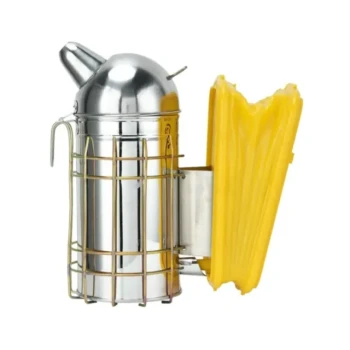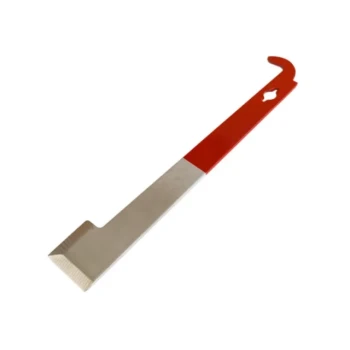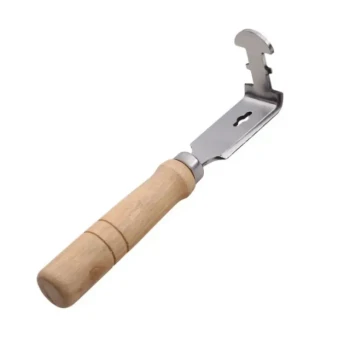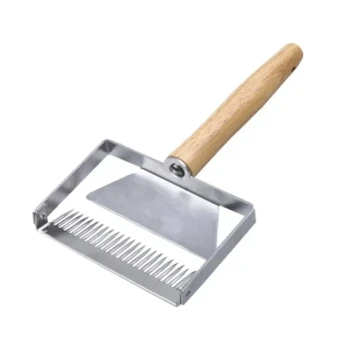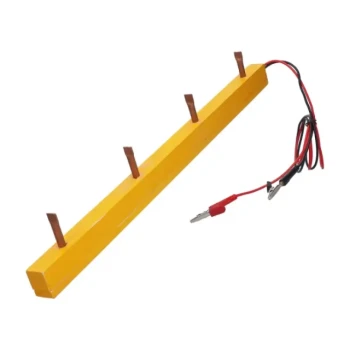To be direct, burlap's main advantages as a smoker fuel are its ability to produce a cool, consistent smoke and its low-residue burn that won't clog your equipment. However, these benefits are overshadowed by a significant and often overlooked disadvantage: the high probability that the material has been treated with chemical fungicides, pesticides, or fire retardants that are toxic to your bees when burned.
The core issue with using burlap is one of trust and safety. While untreated, natural burlap is an excellent fuel, the difficulty in verifying a source as 100% chemical-free makes it a risky choice for the health of your colony.
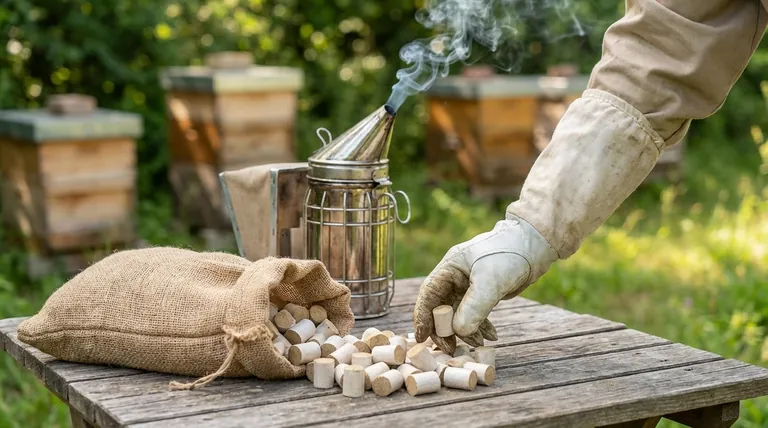
The Profile of an Ideal Smoker Fuel
Before evaluating burlap specifically, we must define what constitutes a superior fuel for calming bees. The goal is not just to create smoke, but to create the right kind of smoke safely and efficiently.
Cool, Dense Smoke
The primary purpose of smoke is to mask alarm pheromones, not to cook your bees. An ideal fuel smolders at a low temperature, producing a thick, cool smoke that is gentle on the bees and the beekeeper.
Consistent and Long-Lasting Smolder
A good fuel should be easy to light and stay lit without constant attention. It needs to burn evenly and for a long duration, so you can focus on your hive inspection without having to frequently manage the smoker.
Clean Burning
A fuel that produces excessive tar, soot, or resin will quickly gum up your smoker's components, particularly the screen and nozzle. This creates maintenance issues and can shorten the life of your equipment.
Safe and Natural
This is the most critical attribute. The fuel must be free of any chemicals, glues, pesticides, or contaminants that could harm the bees, the beekeeper, or the honey.
Evaluating Burlap Against These Standards
Now, let's assess how burlap performs based on these criteria, incorporating both its well-known advantages and its critical flaws.
Advantage: Cool and Consistent Smoke
Burlap, made from natural jute fibers, excels here. It doesn't flare up or produce high heat. Instead, it smolders reliably, generating a steady stream of the exact type of cool, dense smoke that effectively calms a colony.
Advantage: Low Residue
Unlike pine needles or certain wood shavings that can be resinous, burlap burns cleanly. It leaves behind minimal residue, which means your smoker is less likely to become clogged and is easier to clean after use.
The Availability Paradox
You will hear conflicting reports on burlap's availability. Decades ago, untreated burlap sacks were ubiquitous. Today, many bags used for shipping coffee, feed, or potatoes are either made of synthetic polypropylene or are treated to prevent rot and pests, making safe, burnable burlap much harder to find.
The Critical Disadvantage: Chemical Contamination
The potential for chemical treatment is the single greatest argument against using most modern burlap as a smoker fuel. This risk cannot be overstated.
Why Burlap Is Often Treated
Burlap is a natural, biodegradable fiber. To protect it during long-term storage and international shipping, it is frequently treated with chemicals to resist mold, mildew, insects, and even fire.
The Dangers to Your Colony
Burning these treated fibers releases the chemicals directly into the smoke. Puffing this toxic smoke into a hive can have devastating consequences, potentially harming bee respiration, contaminating wax and honey, and even leading to colony death. Unless you can be absolutely certain of the burlap's origin and purity, the risk is simply too high.
How to Apply This to Your Hive
Your decision on smoker fuel should always prioritize the long-term health of your bees.
- If your primary focus is absolute safety and predictability: Use a purpose-made commercial bee fuel, untreated wood pellets, or clean cotton textiles. These options remove the guesswork and provide consistent results.
- If you have a verified source of 100% natural, untreated burlap: It can be a perfectly effective and low-cost fuel that meets all the criteria for good smoke.
- If you are ever in doubt about the material's origin: Do not use it. A single mistake with treated burlap can cause irreparable harm to a colony.
Ultimately, protecting your hive is the most important responsibility of any beekeeper.
Summary Table:
| Aspect | Burlap as Smoker Fuel |
|---|---|
| Smoke Quality | Produces excellent, cool, dense smoke |
| Residue | Low residue, clean-burning for equipment |
| Safety Risk | High risk of toxic chemical contamination |
| Source Reliability | Difficult to verify as 100% untreated and safe |
| Overall Recommendation | Risky; use only if source is 100% verified |
Protect your apiary with safe, reliable supplies from HONESTBEE.
Your commitment to bee health is our priority. While burlap poses significant risks, our wholesale-focused operations provide commercial apiaries and distributors with the guaranteed, high-quality equipment and fuel they need for successful, safe beekeeping.
Contact HONESTBEE today to discuss your wholesale needs and ensure the safety of every hive.
Visual Guide
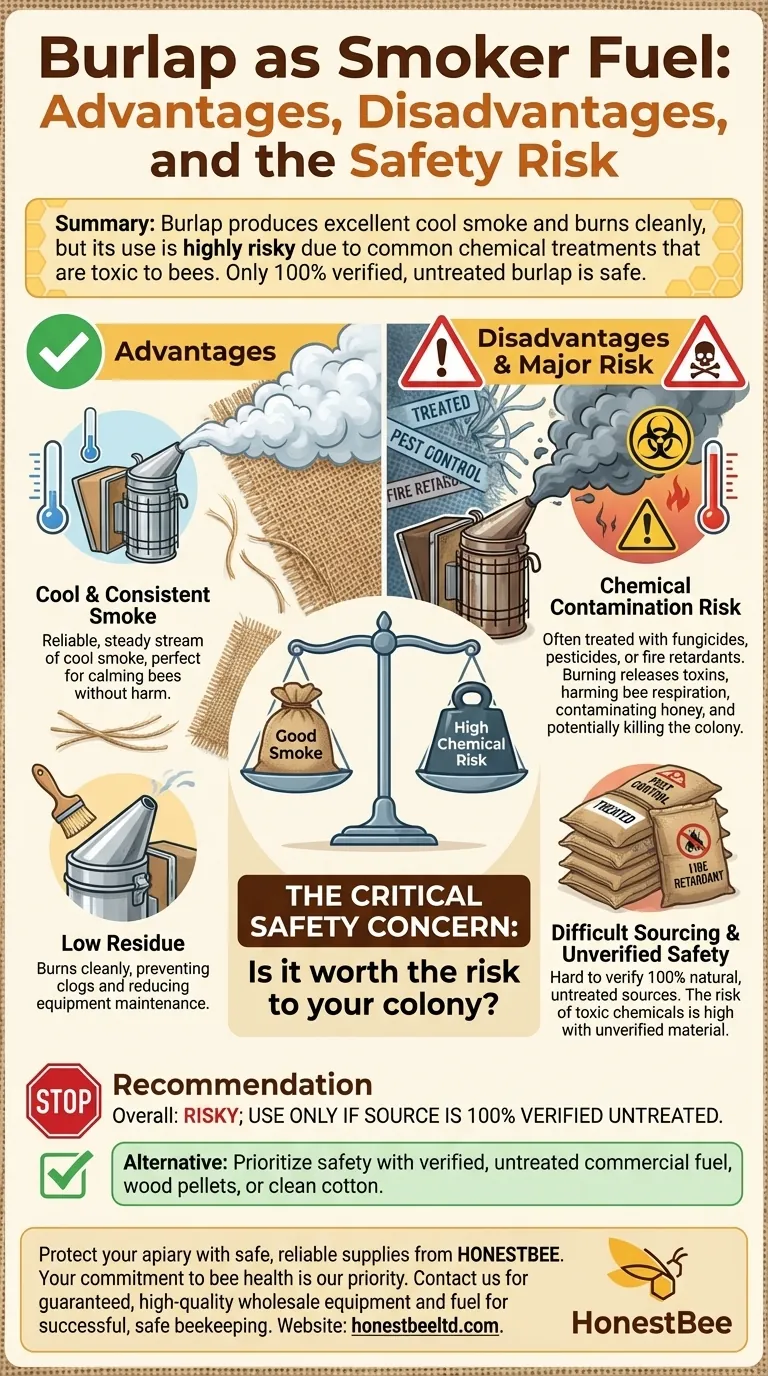
Related Products
- 54-Piece Smoker Fuel Pellets for Beekeeping Beehive Smoker Fuel
- European Stainless Steel Bee Smoker for Honey Bee Hive
- Stainless Steel Honey Bee Smoker Hive and Honeycomb Smoker for Beekeeping
- Miniature Stainless Steel Bee Smoker for Beekeeping
- Premium Traditional Copper Bee Smoker with Bellows
People Also Ask
- What is the best bee hive smoker fuel? Choose Natural, Slow-Burning Fuel for Calm Bees
- What is the best material for a bee smoker? Choose the Right Fuel for a Calm Hive
- What to put in a bee hive smoker? A Guide to Natural, Calming Fuels
- What can I use for bee smoker fuel? Choose Safe, Natural Materials for a Calm Hive
- What is best to burn in a bee smoker? Master the Layered Fuel Technique for Calm Hives








